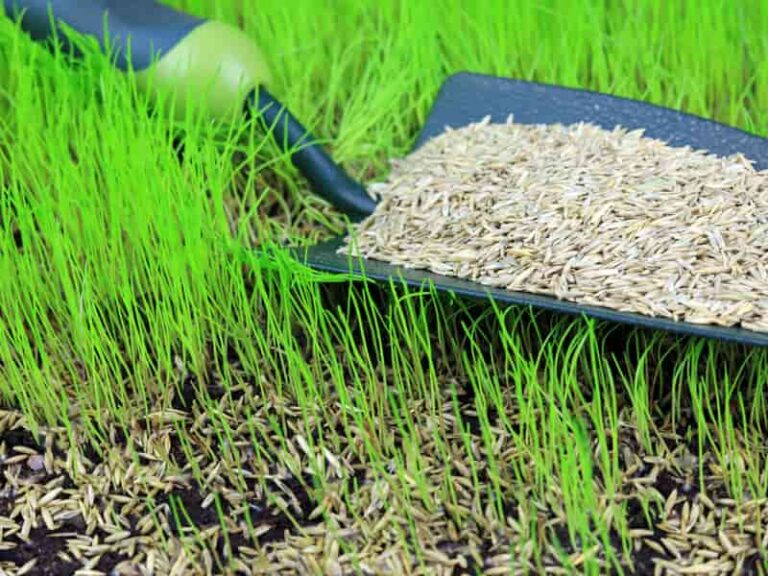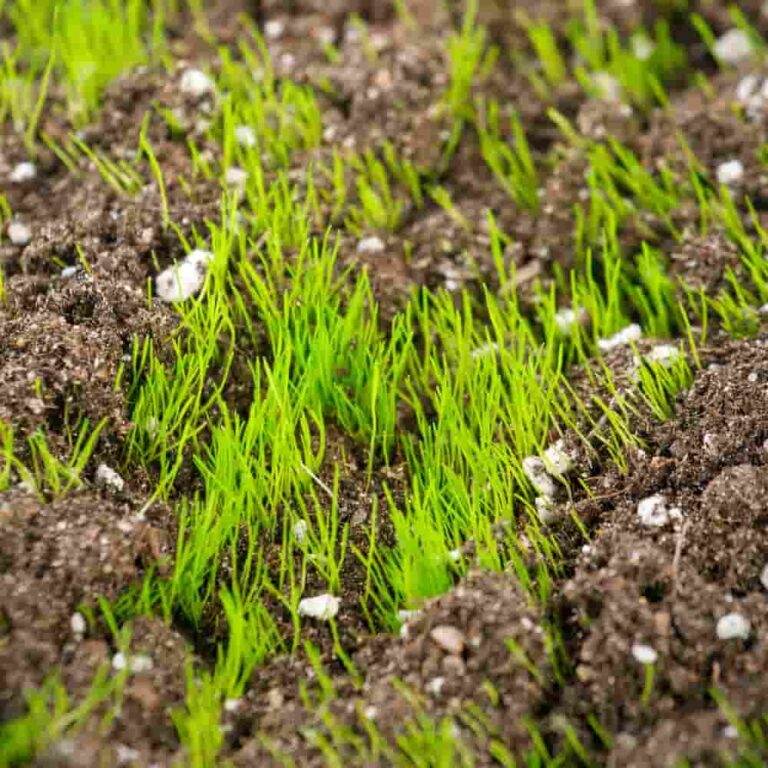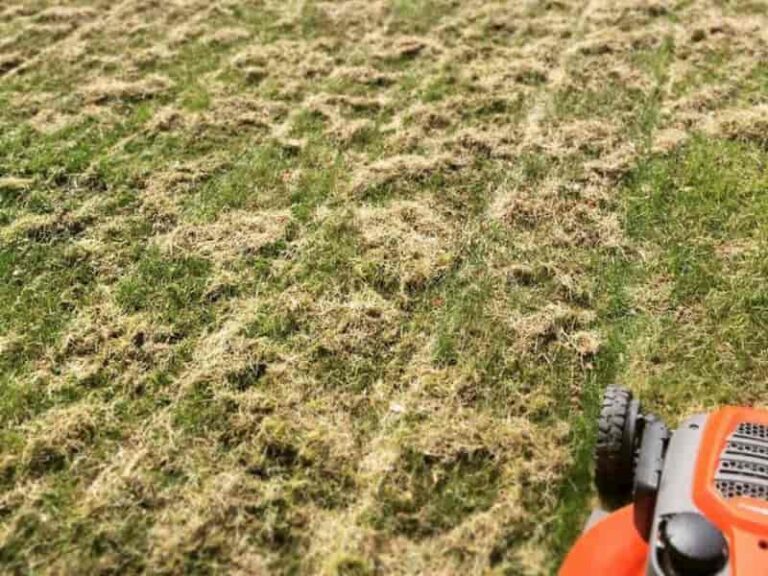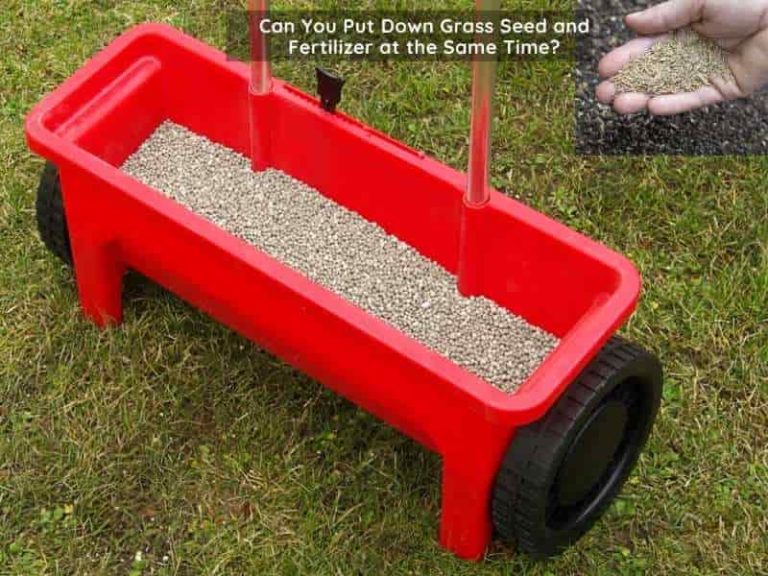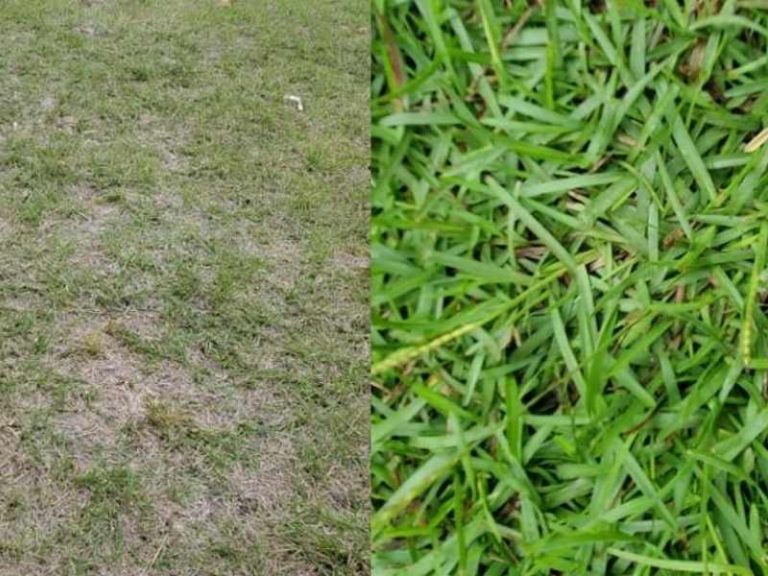Spray-On Grass Seeds for Your Lawn Review
Spraying grass seeds is becoming popular in landscaping. While there are other options for establishing seeds, you’re probably wondering if it’s the best way to develop or overseed your lawn.
From a residential and commercial perspective, spray-on grass seed is faster and more efficient in establishing a lawn. Mixing it before spreading ensures you get the correct ratios for fast, healthy grass growth. The use of machines makes sure you get an even spread over large tracts.
Curious about hydroseeding? Here are facts on what is on spray-on grass entails.
What is spray-on grass seed?
Spray-on grass seed, or hydroseeding, is applying slurry – a mixture of seeds, mulch, fertilizer, water, and a bonding agent – to an area for vegetation cover. The intention is to cover large areas and establish grass seeds faster.
Is spray-on grass seed any good?
Spray-on grass seed is perfect when done correctly. It is an excellent alternative to hand seeding and installing sods. Typically, it targets vulnerable terrain such as:
- Exposed land patches
- Slopes
- Areas with soil moisture retention problems
- Extensive land areas with zero vegetative cover.
Hydroseeding lawn is relatively affordable and consumes less time. It’s a soil management procedure that controls weeds, provides high-quality turf, and prevents soil erosion on slopes.
What does the spray on grass seed entail?
The core of hydroseeding involves five key ingredients. You need grass seeds, mulch, water, and fertilizer. You’ll also need a bonding agent and elbow grease. Throw in a machine spreader, and you’re hydroseeding.
Here’s a complete step-by-step guide on successful hydroseeding.
1. Grass seeds selection
The correct grass seeds depend on your location and the grass seeds’ qualities. Grass seeds that thrive in tropical and subtropical regions are suitable for southern lawns. However, others thrive in the cool temperatures in the northern united states.
The best grass seeds would yield grass resistant to pests, diseases, and insects. Also, the blend would produce grass that tolerates high traffic.
2. Soil analysis
Perform a soil test to determine pH and nutrient composition. Dig soil samples from different yard sections and take them to a nearby university extension for testing. Perform a soil analysis six months before hydroseeding to allow enough time for soil amendment and recovery.
The soil conditions should be favorable to support the grass seeds’ germination. The pH should be conducive, not too acidic or alkaline. Most grasses thrive in soil pH between 6.5 and 7.5
Add lime or compost to raise lower pH or sulfur to lower high pH.
3. Clearing of the ground
Remove leaves, stalks, roots, large stones, and other debris on the surface.
Next, hand-pull the young, unestablished weeds. Remove the whole rooting system. Spray non-selective herbicides on established weeds and pre-emergent herbicides to prevent weed seeds from growing on the lawn.
The ground should be clear of dirt and debris for the grass seeds to contact the soil for germination.
4. Soil grading
Grade the soil to 2.5 to 3.0 inches.
Soil grading creates a smoother raised surface that prevents the slurry from spreading to damage the surrounding areas.
5. Topsoil and compost addition
Add 2 inches of topsoil and compost mixture to the graded soil.
Grass seeds need extra nutrients to germinate and thrive. Topsoil and compost supply nutrients slowly to the soil, which the grass seeds use to grow.
6. Soil re-grading
Re-grading mixes the soil with the added topsoil and compost, spreading them evenly over the area.
Regrade the soil using a rake for small lawns but a power rake for large areas.
7. Hydroseeder preparation
Prepare the hydroseeder so it spreads evenly over the area. Add the grass seeds to the hydroseeder and turn the agitator on to mix the slurry.
8. Spreading the grass seeds
Apply the slurry over the area using the sprayer.
9. Watering the lawn
Irrigate the yard immediately after spreading the grass seeds and water thrice to four times daily in the first two weeks.
In the third and fourth week, water the lawn for longer but less frequently than in the previous sessions. Water the lawn twice per day. After four weeks, water once per week with about 1.5 inches.
10. Fertilizing the lawn
Hydro-mulch seeds need fertilizers to boost nutrients to grow stronger and healthier. After four weeks, apply starter fertilizer with an NPK ratio of 19-19-19. Such fertilizers have balanced nitrogen, phosphorus, and potassium, which the grass needs to grow healthy.
Apply a second fertilizer eight weeks after the first application.
11. Mowing the lawn
Cut the grass regularly to ensure a uniform height and regular growth rate. Mow the lawn one month after hydroseeding when the grass has reached at least 3 inches tall. Cut the grass to the recommended size and as often as necessary.
Best spray on grass seed system
With so many options and individual needs, picking the best product can be challenging. We have compiled the four best spray-on grass seed systems you can choose to establish your lush lawn faster.
Hydro Mousse Liquid Lawn System
Hydro mousse liquid lawn system is arguably the best spray-on grass seed system.
The mousse liquid lawn system kit contains a spray head, coating chamber, and hydro-mulch seed blend. Each kit reseeds 100 square feet or 200 spots. The grass seed is a blend of high-performance grass consisting of tall fescue, perennial ryegrass, merit Kentucky bluegrass, and beacon hard fescue.
The hydro mousse liquid system helps repair patches and neutralize dog spots. It also revives dry spots. For all its benefits, it’s suitable for most climates.
The mousse mulch system is easy to apply. Once you spray it, the surface becomes conspicuous, making it hard to miss a spot. Mousse liquid grass seeds take between 7 to 14 days to germinate and up to one month for full grass coverage.
Hydro Mousse Liquid Lawn System Pros
- Suitable for all climates
- It can be attached to any garden hose
- Indicates areas you have spread the hydro-mulch seeds
Hydro Mousse Liquid Lawn System Cons
- The product stains hands and clothes.
Scotts Turf Builder Starter Food
The Scotts Turf Builder Starter Food is perfect for starting a new lawn, reseeding an existing property, and installing sod, sprigs, and plugs. It promises a 70% thickness increase in grass and 35% faster growth.
Scotts Turf Builder Starter Food waters and feeds the lawn simultaneously. The system comes with an easy-to-use spray bottle that you can connect to a garden hose. Spray the intended area, easy-peasy.
The first treatment is done after the seeds sprout and one week later for the second treatment.
You should start seeing tangible results three weeks after spraying.
Scotts Turf Builder Starter Food Pros
- Feeds and waters the lawn at the same time
- Good on any grass type
- Easy to apply
Scotts Turf Builder Starter Food Cons
- Unsafe for pets and kids
- The bottle can only cover 600 square feet of lawn per application.
Grass Shot by Bulbhead
Grass Shot by Bulbhead is the best remedy for treating pet burn spots, areas damaged by high traffic, bare spots, and tough-to-grow lawn areas.
The kit contains a shot sprayer, a packet of grass seed blends, and a green liquid formula. The grass seed blend consists of perennial ryegrass, Kentucky bluegrass, and tall fescue. Grass shot provides an instant lawn and keeps the property growing.
The grass shot liquid lawn care is simple as it easily attaches to any garden hose.
Grass Shot pros
- Attaches to any garden sprayer
- Provides an instant lawn
- Simple to assemble and use
Grass Shot cons
- Ineffective for certain areas
Gavin 3 in 1
The Gavin 3 in 1 is a soluble fertilizer that converts to a hydroseeder when used on new lawns to overseed and cover bare spots. It is convenient for use around lawns, gardens, and shrubs in the summer season.
Gavin 3 in 1 has an automatic emptying system that ensures it doesn’t splash on the user. The system is straightforward to use. The user inverts the system when loosening the sprayer head.
Gavin 3 in 1 pros
- It doesn’t splash on the user
- Simple to use
Gavin 3 in 1 con
- The liquid doesn’t spread evenly
Pros for spray-on grass?
Hydroseeding lawn is an excellent alternative to installing sods and spreading grass seeds. The system produces a lush green lawn and comes with other benefits when used to establish a lawn.
Less expensive than sodding
Hydroseeding Vs. Sodding cost is something to consider for your lawn. Spray-on-grass seed is more affordable than installing sods on a lawn. Hydro-mulch seeds cost between $0.06 and $0.15 per square foot while installing sods costs $1-$2 per square foot.
Spray-on grass produces top-quality grass
The grass seeds used in the slurry mixture are premium quality, ensuring they germinate faster and provide full coverage.
Spray-on grass reduces weeds on the lawn
Hydro-mulch seeds are free of weed seeds, eliminating the chance of weeds growing on the lawn over time.
Spray-on grass takes less time to grow
Hydroseeding a large area takes less time than installing sods or hand seeding. The simple process involves spraying the mixture on the site and watering.
Spray-on grass controls soil erosion
The hydro-mulch seeds establish extensive roots that bind the soil particles. When sloppy areas prone to soil erosion are hydroseeded, the slurry mixture dries fast and grows evenly, providing a ground cover resistant to erosion.
Cons for spray-on grass
Hydroseeding has drawbacks to consider before choosing it over sods and spreading grass seeds.
Spray on grass seeds requires frequent watering
Unlike laying sods, hydroseeding requires a high water supply when spraying the slurry and the next few weeks before it establishes. Hydro seeds need watering thrice daily in the first two weeks after spraying them and twice daily in the following two weeks.
The hydro-mulch lawn requires 1.5 inches of water weekly when it establishes
You can’t use the lawn immediately.
Hydroseeds take up to 14 days to germinate and sprout and one month to establish. However, their root systems take longer to strengthen and resist heavy traffic. The lawn is out of bounds while the seeds root. The property needs about 3 to 4 months to be ready.
How long does spray on grass take to grow
Spray-on grass seeds take 5-10 days to germinate and sprout when grown under optimum conditions. In adverse situations, they take up to 3 weeks to germinate.
Do birds eat spray on grass seeds?
Birds don’t eat spray on grass seeds since the blend contains heavy mulch that protects the grass seeds from the birds.
Spray on grass seed cost
Hydroseeding costs $0.05-$0.15 per square foot depending on the size of the property, cost of local labor, slope, and grass seed mixture contents. If you have an average-sized 5000 square foot yard, expect to pay around $250-$750
References
- PennState Extension University: Lawn Establishment.
- University of California Agricultural and Natural Resources: Hydroseeding.

